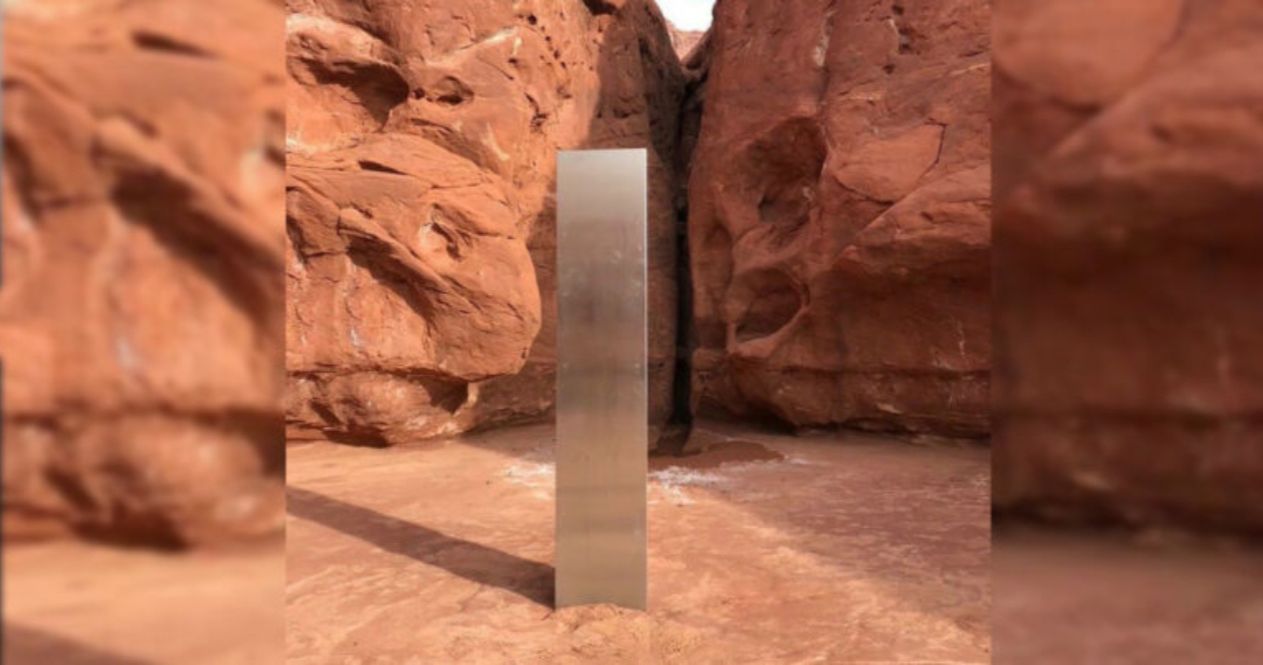Oh 2020, you truly are the gift that keeps on giving. As if there have not already been more than enough movie-like moments occurring in real life, this year has now added extra-terrestrials into the mix, thanks to a team of biologists discovering a peculiar metal monolith in the wilderness in Utah. Of course, they have absolutely no idea where it came from.
"One of the biologists is the one who spotted it and we just happened to fly directly over the top of it," pilot Bret Hutchings, who flew a helicopter over the site, told local news station KSLTV. "He was like, 'Whoa, whoa, whoa, turn around, turn around!'" he added, while sounding exactly like the kind of dialogue you would hear in the first act of a science fiction movie about the hubris of humanity. "And I was like, 'what.' And he's like, 'There's this thing back there - we've got to go look at it!'"
The mysterious monolith reportedly stands between ten and 12 feet high, with the shiny, minimalist structure standing out like a beacon within the otherwise natural landscape. The location of the monolith has been intentionally kept under wraps to keep crowds away. Which, with 2020 being what it is, is probably for the best.
The image of this Utah based alien monument conjures up memories of the cinematic masterpiece 2001: A Space Odyssey, something that has not been lost on those who have seen it. "We were kind of joking around that if one of us suddenly disappears, then the rest of us make a run for it," Hutchings said while foolishly tempting fate. The pilot even posited his own theory as to where it came from saying it was probably put there by "some new wave artist or something or, you know, somebody that was a big '2001: A Space Odyssey' fan."
Produced and directed by filmmaking legend Stanley Kubrick, 1968's 2001: A Space Odyssey centers on an imposing black structure (that looks suspiciously like the one that has just been discovered) which provides a connection between the past and the future. Beginning in prehistoric times before flashing forward to the future (technically now the past), Dr. Dave Bowman and several other astronauts are sent on a mission to Jupiter to seek out a strange monolith that first appeared at the dawn of man. Soon, man is pitted against machine after their ship's computer system, HAL, begins to display increasingly erratic and sinister behavior, leading up to a tense showdown that results in a mind-bending trek through space and time.
Inspired by a short story written in 1951 by revered sci-fi author Arthur C. Clarke, 2001: A Space Odyssey is still considered one of the greatest and most influential achievements in cinematic history, and tackles several profound themes such as existentialism, human evolution, technology, artificial intelligence, and the possibility of extraterrestrial life.
While 2001: A Space Odyssey remains a wonderfully perplexing viewing experience, it is not likely to be something that people need to see take shape in real life. So, if you feel like you're being summoned by the monolith, or like you're transforming into some strange, glowing superhuman baby, maybe just keep it to yourself. This comes to us from Andrew Adams, a reporter at KSL 5 TV.

